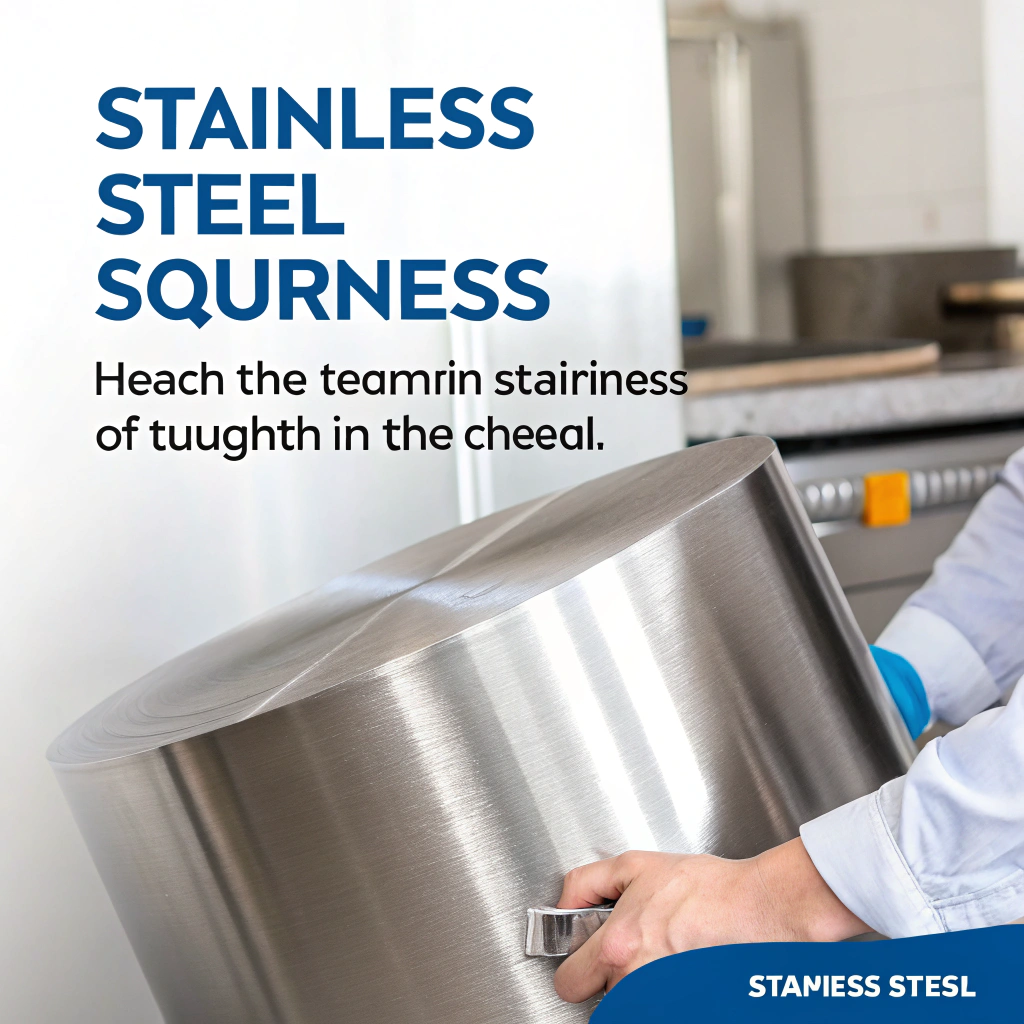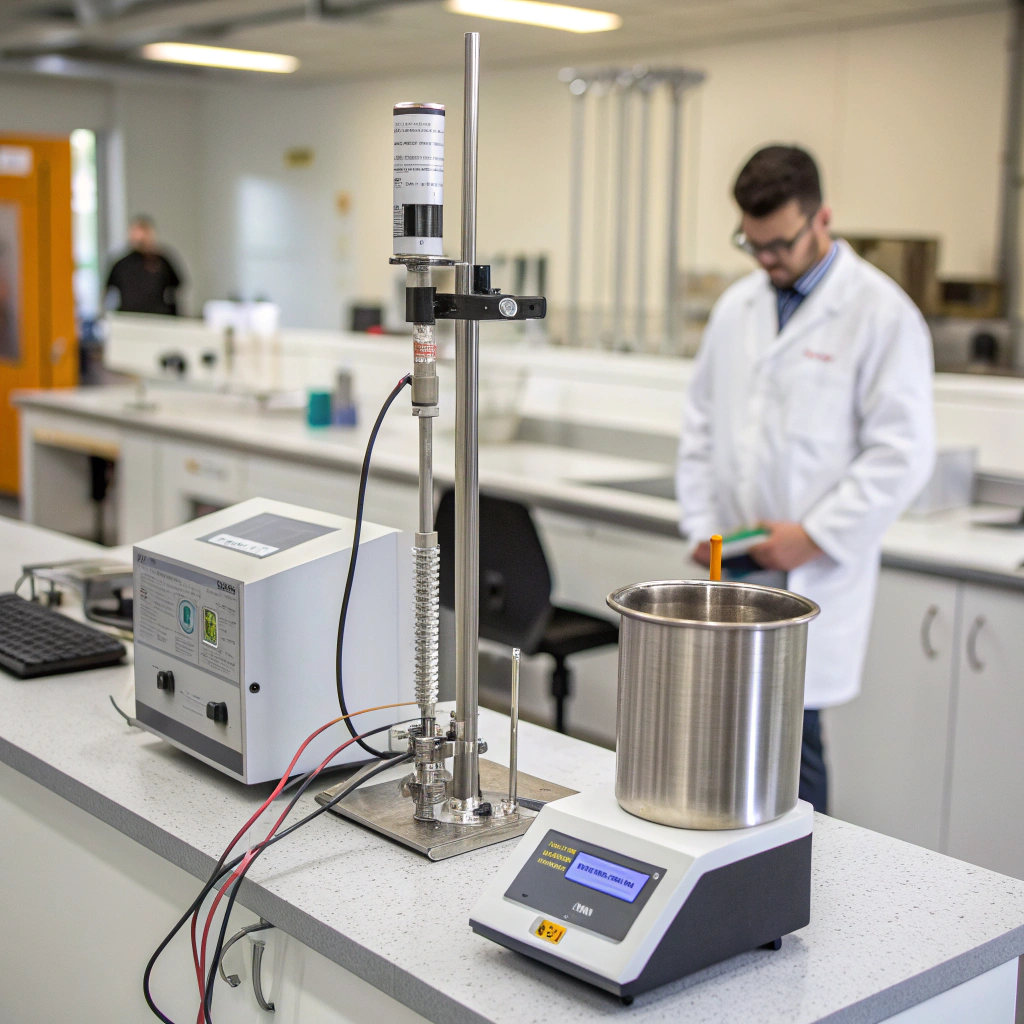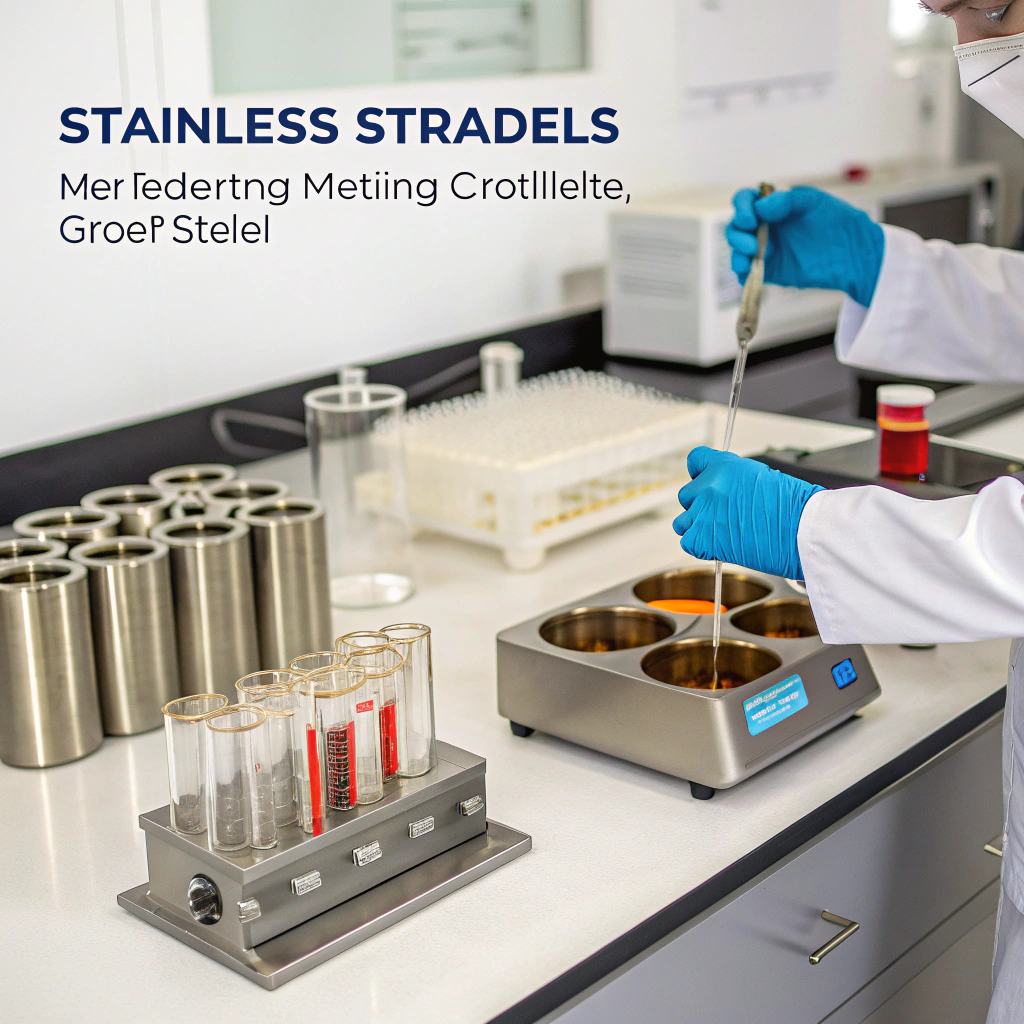Quel est le point de fusion de l'acier inoxydable ?

Stainless steel looks tough—and it is. But even the strongest materials have their limits, and for stainless steel, one of those limits is heat.
The melting point of stainless steel ranges from 1,375 °C to 1,530 °C (2,507 °F to 2,786 °F), depending on the grade and its chemical composition.
That’s not a single number, but a range. Why? Because stainless steel isn’t just one metal—it’s an alloy. The presence of nickel, chromium, molybdenum, and other elements changes how it behaves under extreme temperatures.
If you’re working in manufacturing, construction, metal forming, or high-heat environments, understanding this melting range isn’t optional—it’s essential.
What affects stainless steel melting point?

When I first started dealing with stainless steel processing, I assumed melting point was a fixed number. Turns out, it’s a sliding scale—and the reasons why are pretty interesting.
The melting point of stainless steel is affected by alloying elements, grain structure, carbon content, impurities, and crystal structure.
1. Alloying Elements
The biggest influencer is chemistry. Here are a few key players:
- Nickel: Lowers melting point.
- Chrome: Increases corrosion resistance and slightly raises melting point.
- Molybdenum: Adds strength and raises the melting point.
- Carbon: Small amounts can raise strength, but too much can lower melting point.
| Élément | General Effect on Melting Point |
|---|---|
| Nickel (Ni) | Abaissements |
| Chrome (Cr) | Slightly raises |
| Molybdenum (Mo) | Raises |
| Carbon (C) | Variable (can increase or decrease) |
2. Microstructure and Grain Boundaries
Smaller grains can increase the number of grain boundaries, which slightly lowers the overall melting temperature. This doesn’t create a drastic change, but in precision manufacturing, every degree counts.
3. Crystal Structure
There are three main types:
- Austenitic (FCC): Lower melting points, more ductile.
- Ferritic (BCC): Higher melting point, less ductile.
- Martensitic (BCT): Harder, with varying melting points.
Alloying elements like nickel and carbon can influence the melting point of stainless steel.Vrai
Nickel lowers the melting point, while carbon can raise or lower it depending on concentration.
Stainless steel always melts at a fixed temperature regardless of its composition.Faux
Melting point changes with the grade and alloying elements.
How is stainless steel melting point measured?

You can’t just toss stainless steel into a fire and guess when it melts. In industrial and lab environments, we use controlled, repeatable methods.
Stainless steel melting point is measured using thermal analysis methods like Differential Thermal Analysis (DTA), Differential Scanning Calorimetry (DSC), and Thermomechanical Analysis (TMA).
Methods Used:
1. Differential Scanning Calorimetry (DSC)
- Measures heat flow into or out of a sample.
- Identifies the exact temperature range where melting begins and ends.
2. Thermomechanical Analysis (TMA)
- Tracks dimensional changes with temperature.
- Helps detect softening or deformation points before melting.
3. Pyrometers
- Used in high-temperature furnaces.
- Non-contact infrared devices that track surface temperature as it heats up.
| Méthode | Description | Précision |
|---|---|---|
| DSC | Heat flow measurement | Haut |
| TMA | Dimensional change monitoring | Modéré |
| Pyrometer | Optical surface temperature | Good for industrial use |
In real-world applications like welding or casting, engineers refer to these lab measurements to control heating and cooling rates, especially for specialized stainless grades.
Differential Scanning Calorimetry is a method used to measure the melting point of stainless steel.Vrai
DSC measures heat flow to detect melting onset and completion.
The melting point of stainless steel can be measured just by visual inspection during heating.Faux
Visual inspection is unreliable due to reflective surfaces and gradual phase change.
Why does grade affect melting temperature?

When someone asks me why different grades melt at different temperatures, I tell them: it’s all in the recipe. Each grade is a unique blend of metals.
Grade affects melting temperature because different stainless steel types contain varying proportions of elements like nickel, chromium, and carbon.
Let’s look at some common grades:
| Stainless Steel Grade | Melting Range (°C) |
|---|---|
| 304 | 1,400–1,450 |
| 316 | 1,375–1,400 |
| 430 (Ferritic) | 1,425–1,510 |
| 410 (Martensitic) | 1,480–1,530 |
What Changes Between Grades?
– 304 vs. 316
316 has more nickel and molybdenum, which both lower the melting point slightly.
– Ferritic Grades (e.g., 430)
These contain less nickel and more chromium, which raises the melting point.
– Martensitic Grades (e.g., 410, 420)
Higher carbon content increases hardness but can influence the melting range to be slightly higher and more variable.
This is critical in industries like aerospace, food processing, and energy—where using the wrong grade can lead to premature failure under high heat.
304 stainless steel melts at a higher temperature range than 316 stainless steel.Vrai
304 has slightly less nickel and molybdenum, which typically lowers the melting point in 316.
All stainless steel grades have the same melting temperature.Faux
Each grade has a unique alloy composition, which affects its melting range.
Can stainless steel compositions change melting point?

This is a question I hear from clients developing custom alloys. “If we tweak the formula, will it melt differently?” The short answer? Yes, absolutely.
Yes, changing the composition of stainless steel changes its melting point. Even small adjustments in alloying elements can shift the melting range.
Common Composition Adjustments:
1. Add More Nickel
- Improves ductility.
- Lowers melting point.
2. Increase Chromium
- Boosts corrosion resistance.
- Slightly raises melting point.
3. Introduce Molybdenum
- Improves heat resistance and strength.
- Raises melting point.
4. Adjust Carbon
- Increases hardness, but excess carbon can cause brittleness and lower melting temperature if not stabilized.
| Composition Change | Effet sur le point de fusion |
|---|---|
| + Nickel | Decreases |
| + Chromium | Slightly increases |
| + Molybdenum | Increases |
| + Carbon (moderate) | Variable, usually increases |
| + Titanium / Niobium | Stabilizes carbides, increases |
Even trace elements like sulfur or phosphorus can affect melting behavior. That’s why stainless steel manufacturing always involves tight quality control and chemical certification.
Adjusting the nickel content in stainless steel affects its melting range.Vrai
Nickel content directly influences melting behavior by lowering the melting point.
Stainless steel composition has no effect on its melting behavior.Faux
Changes in composition directly impact melting point and temperature performance.
Conclusion
Melting point isn’t just a technical spec—it’s a critical factor in material performance. For stainless steel, the melting range depends entirely on grade and composition. Whether you’re choosing a grade for high-temperature use, casting, or welding, understanding this melting behavior will help you avoid costly mistakes and ensure structural performance that lasts.



